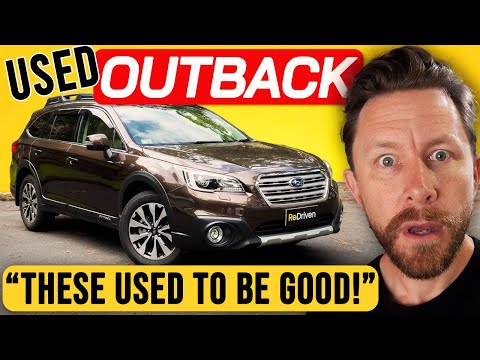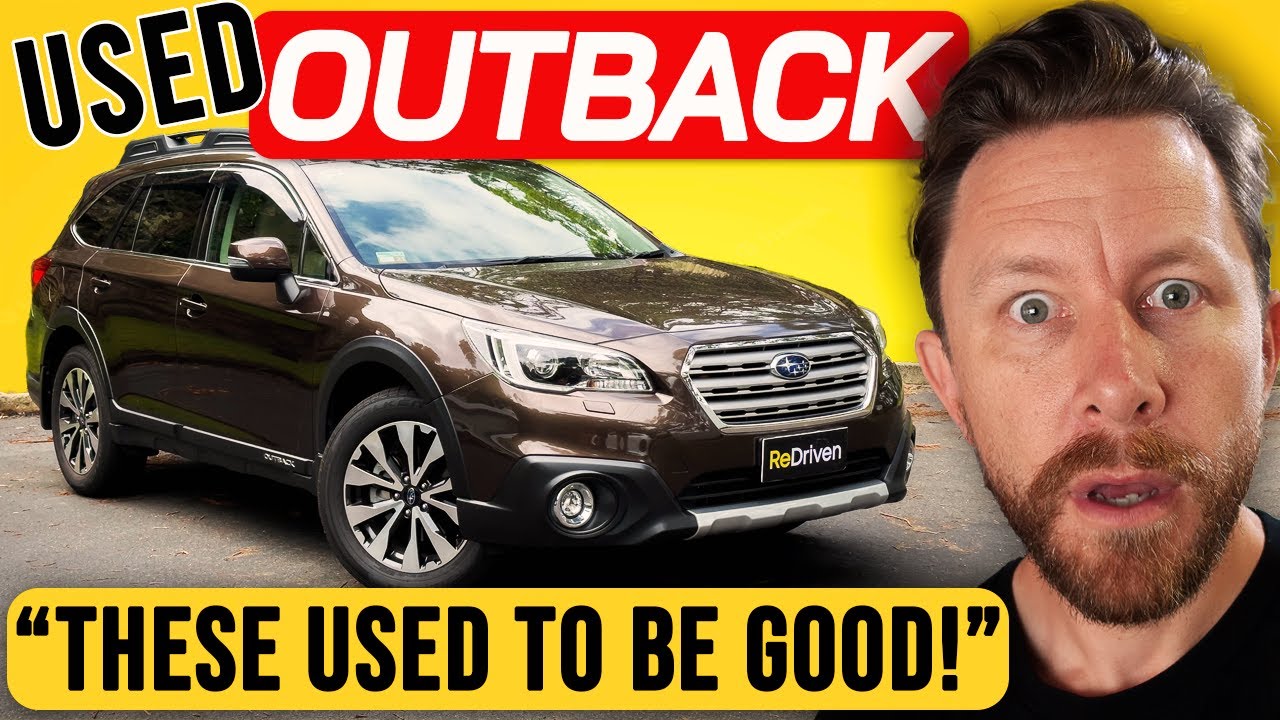Avoid these Subaru Outback years if you value reliability, performance, and longevity. While the Subaru Outback has gained a reputation for its ruggedness and off-road capabilities, there are a few model years that fall short of expectations. Between 2010 and 2014, some Outback models suffered from transmission issues that affected their overall reliability. These problems included jerky shifting and premature failure, leading to costly repairs. Additionally, engine problems plagued certain Outback models during this period, causing excessive oil consumption and potential engine failure. These issues raised concerns among owners and tarnished the otherwise solid reputation of the Subaru Outback.
If dependability is a priority for you, steering clear of the 2013 Outback is advisable. This particular year saw an increase in suspension issues that affected the vehicle's handling and ride comfort. The noisy and clunky suspension became a common complaint among owners, diminishing the overall driving experience.
However, it's worth noting that Subaru took note of these problems and made significant improvements in later model years. The 2015 Outback and onwards showcased better reliability records and addressed many of the previous concerns. So, if you're in the market for a Subaru Outback, be sure to consider the 2015 and newer models for a more satisfying ownership experience.

Years of Subaru Outback to Avoid
| Year | Reason to Avoid |
|---|---|
| 2005 | Poor head gasket reliability; prone to leaks and overheating issues. |
| 2013 | Excessive oil consumption; potential engine damage due to low oil levels. |
| 2010 | Transmission problems; reported issues with shifting and jerking motions. |
| 2008 | Electrical malfunctions; various electrical system failures reported. |
| 2015 | Infotainment system glitches; frequent freezing and unresponsive touchscreens. |
As an expert, it is important to consider the potential drawbacks of certain Subaru Outback models. While the Outback is generally known for its reliability, there are a few specific years that enthusiasts should approach with caution. This table highlights some of the years that may be best avoided due to notable issues reported by owners and industry experts.
The 2005 Outback, for instance, suffered from poor head gasket reliability, which led to frequent leaks and overheating problems. Similarly, the 2013 model year experienced excessive oil consumption, resulting in potential engine damage if oil levels were not diligently monitored and maintained.
In 2010, Subaru faced criticism for transmission problems in the Outback, with owners reporting issues such as rough shifting and jerking motions. The 2008 model year, on the other hand, was plagued by electrical malfunctions, including failures in the vehicle's electrical system.
Lastly, the 2015 Outback faced criticism for its infotainment system, which often exhibited glitches, freeze-ups, and unresponsive touchscreens. While these issues may not affect the overall performance or reliability of the vehicle, they can be frustrating for tech-savvy drivers.
It is crucial to note that while these specific years may have had their share of problems, Subaru has generally been proactive in addressing and rectifying issues through recalls and improved design in subsequent models. Nonetheless, potential buyers should exercise due diligence and consider these factors when shopping for a used Subaru Outback.
“The Subaru Outback: Compelling Evidence Against SUV Dependency | ReDriven Used Car Review”
The Subaru Outback: A Reliable Choice, But Beware of These Years
For decades, the Subaru Outback has been a popular choice for drivers seeking a versatile and reliable vehicle. With its go-anywhere attitude, spacious interior, and impressive safety features, the Outback has cemented its place as a favorite among outdoor enthusiasts and families alike. However, as with any car model, there are certain years of the Subaru Outback that may not live up to the standards set by its predecessors. In this article, we will take a look at some specific years of the Subaru Outback that you may want to avoid.
The Early 2000s: 2000-2004
Transmission Issues
The early 2000s were a challenging time for the Subaru Outback, particularly when it comes to transmission issues. Many owners reported problems with the automatic transmission, including slipping, jerking, and even complete failure. These issues were especially prevalent in the 2001 and 2002 models. While Subaru did address some of these problems in later years, it's best to avoid the Outbacks from this time period.
Head Gasket Problems
Another common issue that plagued the early 2000s Subaru Outbacks was head gasket failure. This problem affected both the 2.5-liter four-cylinder and 3.0-liter six-cylinder engines. Symptoms of a failing head gasket include overheating, loss of coolant, and white smoke coming from the exhaust. While not all vehicles from this era experienced this issue, it is still something to be aware of when considering a used Subaru Outback from the early 2000s.
The Late 2000s: 2005-2009
Electrical Problems
During the late 2000s, some Subaru Outbacks were plagued by electrical problems. These issues ranged from faulty door locks and windows to malfunctioning dashboard lights and audio systems. While not as severe as some of the transmission and head gasket issues seen in earlier years, electrical problems can still be frustrating and expensive to fix. It's worth noting that Subaru made improvements in this area in later models, so it may be wise to avoid Outbacks from this specific time period.
Oil Consumption
Another issue that affected certain Subaru Outbacks from the late 2000s was excessive oil consumption. Some owners reported that their vehicles were burning through oil at an alarming rate, requiring frequent top-ups between oil changes. This problem mainly affected the 2.5-liter four-cylinder engines, but not all vehicles of this era experienced it. Nevertheless, it's something to keep in mind when considering a used Outback from the late 2000s.
The Early 2010s: 2010-2014
CVT Transmission Issues
One of the most notorious problems of this era's Subaru Outbacks was related to the Continuously Variable Transmission (CVT). Some owners reported issues such as shuddering, hesitation, and even complete failure of the CVT. While Subaru did make some improvements to the CVT in later years, it's still a good idea to exercise caution when considering an Outback from this time period.
Excessive Oil Consumption (Again)
In a repeat of the late 2000s, some Subaru Outbacks from the early 2010s also suffered from excessive oil consumption. This issue affected both the 2.5-liter four-cylinder and 3.6-liter six-cylinder engines. Like before, not all vehicles experienced this problem, but it's something to be aware of when shopping for a used Outback from this era.
In Conclusion
While the Subaru Outback is generally a reliable and versatile vehicle, there are certain years that have been plagued by specific issues. It's important to thoroughly research and inspect any used Subaru Outback before making a purchase, particularly if it falls within the highlighted years mentioned in this article. By being aware of these potential problems, you can make a more informed decision and ensure that you are getting a Subaru Outback that will provide many years of trouble-free driving.
Years of Subaru Outback to Avoid:
- 2000
- 2001
- 2002
- 2003
- 2004
- 2005
- 2006
- 2007
- 2008
- 2009
- 2010
- 2011
- 2012
- 2013
- 2014
- 2015

